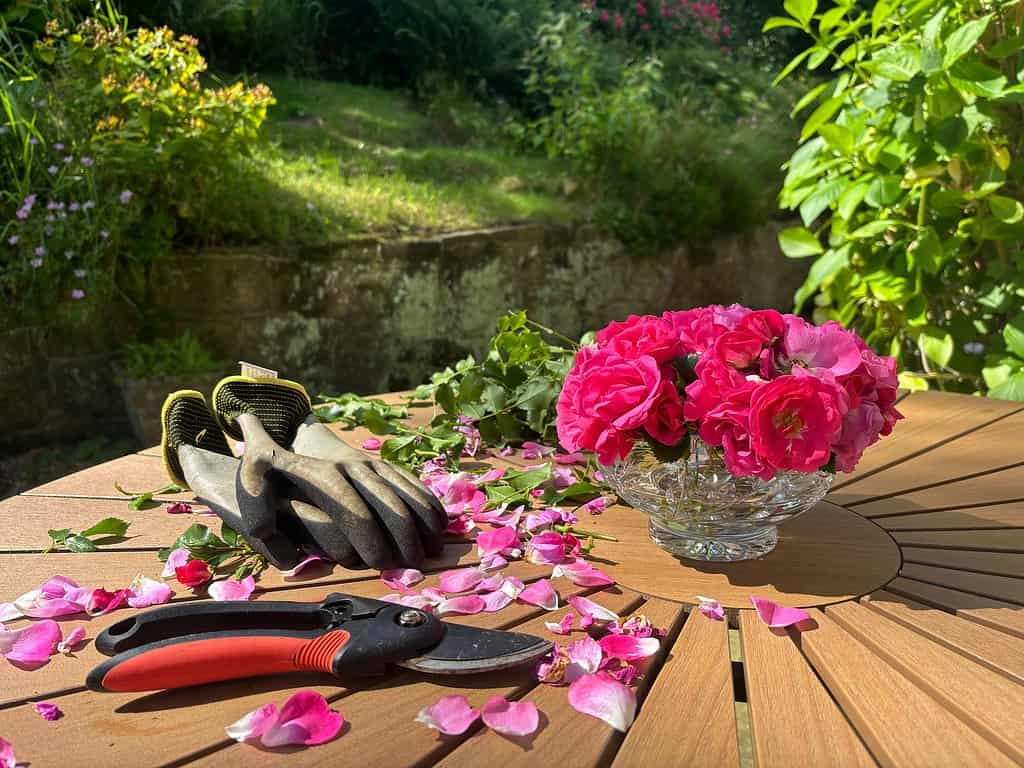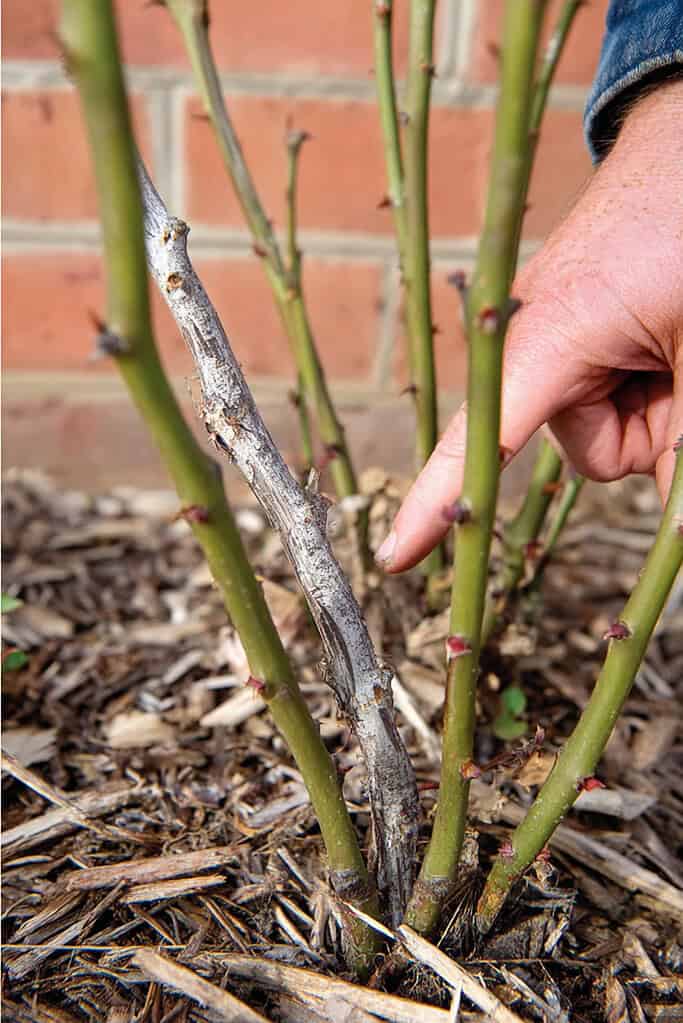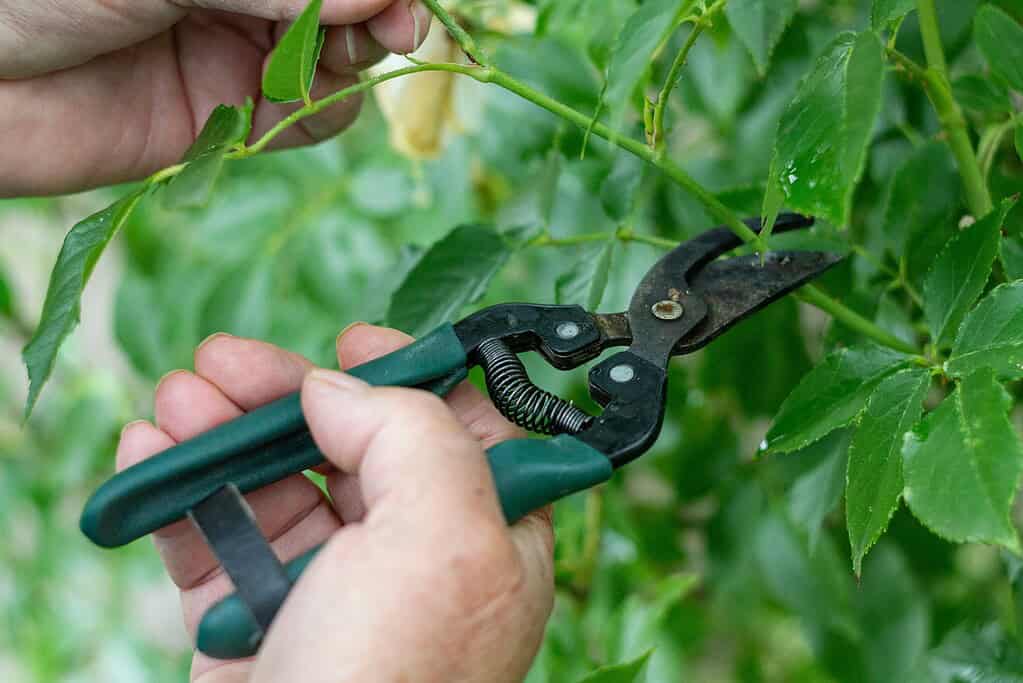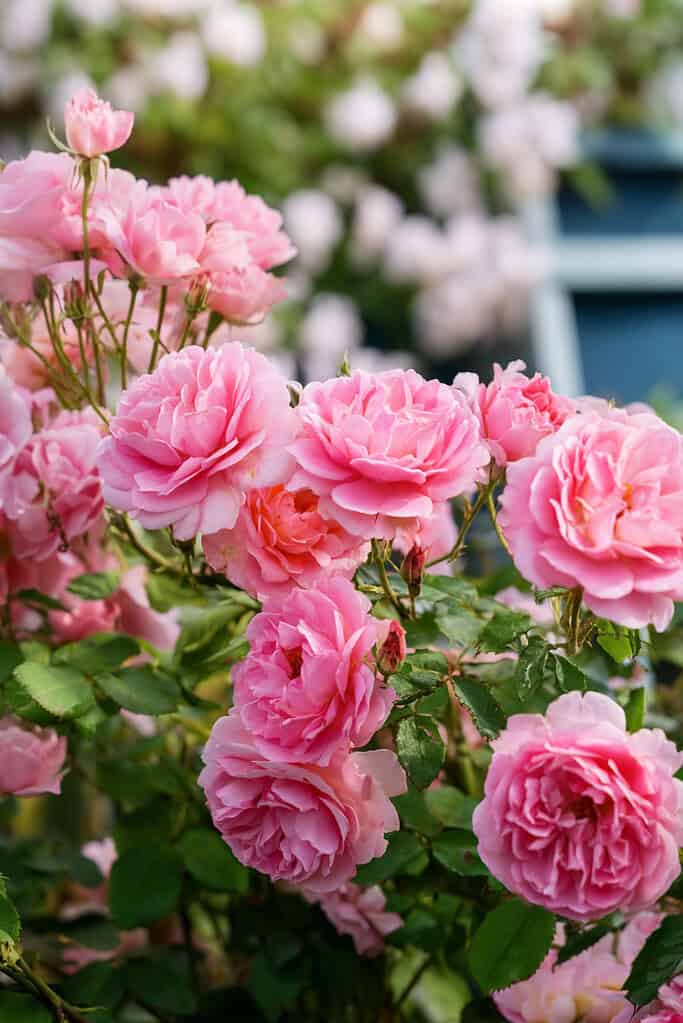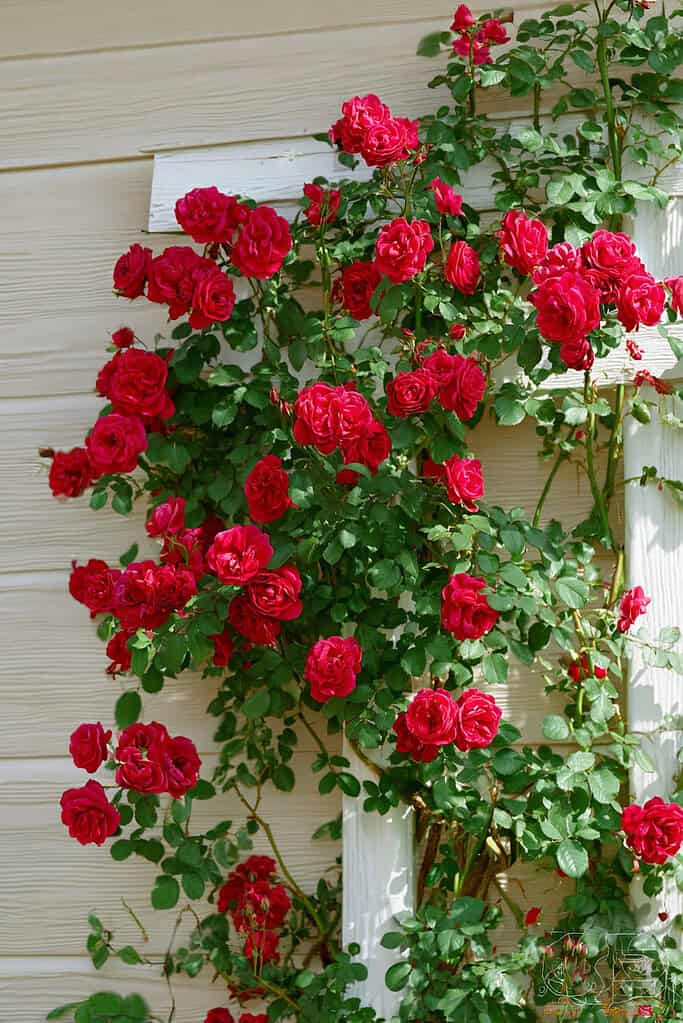Pruning roses at the right time and in the right way is one of the most important things you can do to get more blooms and keep your plants healthy.
But many gardeners either cut too early, too late, or in the wrong way – and end up with fewer flowers or stressed-out shrubs.
In this article, I'll show you how to prune roses before spring starts, with clear timing signals, safe and clean cutting practices, and adjustments for different rose types.
Whether you want more blooms, bigger flowers, or just easier care, the right approach makes all the difference.
When Is the Best Time to Prune Roses?
The best time to prune roses is just before the plant breaks dormancy – after the last hard frost but before the buds begin to leaf out.
Many gardeners aim for “early spring,” but that advice is often too vague. To get better results, you need to look at the plant itself.
A reliable way to time your pruning is to watch for bud swelling. Dormant buds will begin to plump up and show a pink or reddish tint – a clear sign the rose is waking up.
This is your signal to prune. If you prune much earlier, you risk frost damage. If you prune too late, the plant has already put energy into new growth you’ll be cutting off.
If it’s hard to spot the buds, there’s a way to help them show sooner. About two weeks before you plan to prune, cut off the remaining foliage (don’t tear it, as this can damage the buds).
This encourages the buds to swell and become more visible, so you can prune more precisely.
In warmer climates, roses may not go fully dormant. To help them enter dormancy naturally, stop deadheading at the end of the season and allow rose hips to form.
These seed pods tell the plant it’s time to rest, helping you reset the bloom cycle and time your pruning better in late winter.
Lastly, if you're unsure what type of rose you have, don’t rely on guesswork. Instead, watch how it behaves throughout the year.
If it blooms on new wood, prune while it’s dormant in late winter or early spring. If it blooms on old wood, wait to prune until after it flowers in spring or early summer.
Want to take your pruning efforts even further? Check out these easy rose garden ideas for easy ways to design a space that keeps your roses looking beautiful all year long.
Tools and Safety Gear You Need for Pruning Roses
Before you begin pruning, it's important to gather the right tools and wear proper gear.
This helps you make clean cuts that heal quickly and keeps you protected from thorns and potential infections.
Here's what you need:
Essential Tools
- Bypass pruning shears – Best for clean cuts on live canes. Avoid anvil pruners, which can crush and damage the stems.
- Loppers – Useful for cutting thick canes that are too large for hand pruners.
- Pruning saw – Ideal for removing very old or woody stems that loppers can't handle.
- 70% isopropyl alcohol or disinfectant spray – For sterilizing pruners between plants to prevent spreading disease.
Protective Clothing and Gear
- Gauntlet-style gardening gloves – Protects your hands and forearms from sharp thorns.
- Canvas pants or jeans – Prevents scratches and punctures on your legs.
- Long-sleeved shirt or canvas jacket – Shields your arms while allowing free movement during pruning.
By the way, if you’re building your garden toolkit or looking to upgrade what you have, take a peek at my recommended gardening tools for tried-and-true gear that makes pruning and everyday garden care much easier.
How to Identify What Needs to Be Pruned
Knowing what to cut (and what to leave) is one of the most important parts of pruning roses.
The goal is to remove anything that weakens the plant or reduces bloom production, while keeping the strongest, healthiest canes.
Dead or Damaged Canes
Start by looking for dead or damaged canes. These are often dark brown, black, yellow, or blotchy and show little to no green tissue.
To confirm, make a small cut into the cane – if the inside isn’t white or pale green, continue cutting lower until you reach healthy wood.
Thin or Weak Canes
Next, check for canes that are too thin to be productive.
Any stem thinner than a pencil is unlikely to support strong flowers and tends to sap energy from the rest of the plant. Removing these helps redirect growth to stronger canes.
Crossing or Rubbing Canes
Crossing or rubbing canes can create small wounds where disease and pests may enter. Keep the stronger or better-placed cane and remove the one that’s causing friction or crowding.
Suckers from the Base
Look near the base of the plant for suckers – vigorous shoots that emerge from below the graft union or directly from the rootstock.
These typically don’t produce quality flowers and should be removed at the base or just below the point where they emerge.
Inward-Facing Growth
Finally, watch for canes growing toward the center of the plant.
This inward growth reduces air circulation and crowds the plant’s interior, which can lead to fungal problems. Removing these canes opens up the plant and allows it to breathe better.
Take your time when evaluating the plant. Careful observation helps you shape it for both strength and bloom production.
How to Make the Right Cuts for Healthy Growth
Making the right cuts is just as important as knowing what to cut. A proper cut encourages strong new growth, reduces the chance of disease, and helps the plant heal quickly.
Here’s how to do it correctly:
- Cut at a 45-degree angle: Make each cut just above a bud, angling away from it. This allows water to run off instead of sitting on the cut, which helps prevent rot and infection.
- Cut above an outward-facing bud: This encourages the new growth to spread outward, opening up the center of the plant and improving air circulation.
- Avoid cutting too close or too far: Leave about ¼ inch of cane above the bud. Too close can damage the bud; too far can leave a dead stub that may rot.
- Cut back to healthy tissue: When removing dead or diseased canes, keep cutting down until you see clean, white or pale green pith in the center of the cane. If the center is brown or yellow, keep going lower.
- Seal large cuts in borer-prone areas: If borers are common in your region, apply a dab of white glue to large or thick cuts. This discourages pests from burrowing into the canes.
Precise cutting not only shapes the plant – it also helps direct energy toward healthy growth and more blooms in the coming season.
How to Prune Roses to Maximize Bloom Quantity or Size
The way you prune directly affects the number and size of blooms your rose bush will produce.
By adjusting how much you cut back, you can shape the plant to match your gardening goals – whether that’s larger flowers or more of them.
For Bigger Blooms and Longer Stems
If you want large, showy roses with long stems (ideal for cutting or displaying), prune lower on the canes. This usually means cutting the stems back to around 12 to 18 inches from the base.
- Best for: Hybrid teas and exhibition roses
- Result: Fewer blooms, but each one is larger and more defined
- Benefit: Strong, upright growth with longer stems
For More Blooms Throughout the Plant
To encourage a higher number of blooms across the plant, prune higher up, leaving more of the cane intact – generally trimming back about ⅓ of the plant’s overall height.
- Best for: Shrub roses, floribundas, and garden display
- Result: More blooms, but each flower is smaller and on shorter stems
- Benefit: Fuller, bushier appearance with a mass of flowers
Choose Based on Purpose
There’s no single “correct” approach – it depends on how you use your roses:
- Want long-stemmed roses in vases? Cut back more.
- Want lots of flowers in the garden bed? Cut back less.
This kind of targeted pruning helps you manage bloom performance while still supporting healthy growth.
Once you get the hang of pruning roses, you’ll start noticing how every plant has its own little rhythm and response to a good trim.
If you’re in the mood to keep those pruning shears busy, here are a few other plants worth shaping up next:
More Plant Pruning Guides You’ll Love
If you enjoyed learning how to prune roses, check out these other quick pruning guides to keep your garden thriving:
Pruning for Airflow, Disease Prevention, and Cleanliness
Pruning isn’t just about shaping your rose bush or increasing blooms – it’s also a key part of keeping your plants healthy.
Good pruning reduces the risk of fungal disease, deters pests, and improves airflow around the plant.
Open Up the Center of the Plant
One of the main goals of pruning is to create a more open structure by removing canes that grow inward. This helps air move through the plant more easily, which:
- Reduces moisture buildup, which often leads to black spot, powdery mildew, and other fungal issues
- Makes it harder for pests to find protected hiding spots
Always prune to an outward-facing bud so that new growth points away from the center of the plant.
Sterilize Tools Between Each Plant
To avoid spreading disease from one rose bush to another, always wipe your pruners with 70% isopropyl alcohol or a disinfectant spray before moving to the next plant.
Fungal spores and bacteria can linger on tools and infect otherwise healthy roses.
Seal Large Cuts in Problem Areas
If you live in a region where cane borers are a known issue, apply white glue to the ends of larger or thick canes after cutting. This seals the opening and prevents insects from burrowing into the stem.
Clean Up All Pruned Material
Once pruning is finished, take time to remove all fallen leaves, cut branches, and old foliage from around the base of the plant.
This material can harbor overwintering pests, fungal spores, or eggs that will reintroduce problems in the growing season.
Keeping your roses clean and well-ventilated through smart pruning is one of the simplest ways to reduce disease pressure and avoid chemical treatments later on.
Special Rose Types That Need Different Pruning
Not all roses respond to the same pruning method. While general rules work for many varieties, some types need a more specific approach.
Knowing what kind of rose you have will help you prune at the right time and in the right way to keep it blooming strong.
Ramblers and Once-Blooming Roses (Old Wood Bloomers)
Ramblers and some heirloom varieties like Alba and Gallica bloom only once per year on last season’s growth. If you prune them in late winter or early spring, you’ll likely remove the buds that would have produced flowers.
- When to prune: Only after flowering, typically in late spring or early summer
- What to remove: Dead wood, very thin canes, and spent flowering stems
- Key point: These types need very little pruning overall
Climbing Roses
Climbing roses need different care from shrub types. The goal is to train the long canes horizontally and encourage flowering along the side shoots, called laterals.
- When to prune: Late winter or early spring, while dormant
- What to do:
- Remove dead or crossing canes
- Shorten side shoots (laterals) to 3–5 buds
- Leave the main structural canes intact and tie them horizontally if possible
- Tip: You don’t need to worry about cutting to outward-facing buds on laterals
Knock Out Roses
Knock Out roses bloom on new growth and tend to bloom repeatedly through the season. They can handle hard pruning and bounce back fast.
- When to prune: Late winter or early spring, or lightly after each bloom cycle
- What to do:
- Cut back by about one-third in spring
- Trim off rose hips (the round seed pods) throughout the season to encourage more blooming
- Tip: They don’t require detailed pruning – keep them in shape and remove old wood
Landscape Roses
These are bred for durability and low maintenance. Pruning them is quick and simple.
- When to prune: Late winter or early spring
- What to do:
- Remove any dead, damaged, or diseased wood
- Trim the entire plant back by about half its height
- Tip: No need to worry about bud direction or precise cuts
Different rose types have different growth habits, so matching your pruning style to the rose ensures healthy growth and better flowering without overcomplicating the process.
How to Prune Roses If You Don’t Know the Type
If you’re not sure what kind of rose you’re growing, don’t worry – you can still prune it effectively.
The key is to observe how the plant behaves during the growing season and adjust your pruning timing accordingly.
Watch When It Blooms
The timing of the plant's flowering gives important clues. If your rose blooms early in the season and doesn’t flower again, it most likely produces blooms on old wood.
In that case, pruning in early spring could remove flower buds that were already formed, leading to fewer or no blooms that year.
Instead, wait to prune these roses until after they have finished blooming.
If the rose blooms later or continues to flower throughout the growing season, it’s likely a repeat bloomer that flowers on new wood.
These types can be pruned during late winter or early spring while the plant is still dormant, without risking the loss of flower buds.
Use Conservative Pruning If Unsure
If you haven’t yet observed the plant’s bloom habits, take a cautious approach. Start by removing anything clearly dead, damaged, or diseased.
Then lightly shape the plant without cutting too far into healthy canes. Avoid deep cuts until you’re more certain whether it blooms on new or old wood.
This way, you protect potential blooms without letting the plant become overgrown or tangled.
Take Notes Through the Season
The best way to build confidence in pruning an unknown rose is to keep track of its behavior.
Make note of when it starts blooming, whether it produces more than one round of flowers, and how it grows – whether it climbs, stays compact, or spreads outward.
These observations will help you identify its likely type and refine your pruning method in future seasons.
Start Pruning with Purpose Before Spring Takes Off
Pruning roses the right way (at the right time) can lead to a stronger plant, fewer pest issues, and significantly more blooms.
By watching for swelling buds, cutting with clean tools, and adjusting your approach based on your rose variety, you give your roses a solid start for the season ahead.
Don’t worry if you’re not an expert yet. With a careful eye and consistent practice, pruning becomes more intuitive each year.
Stick with the basics, adapt based on what you see, and always keep airflow, timing, and cane health in mind.
Have questions or want to share your own pruning tips?
Comment down below and let’s help each other grow better roses.
FAQs
How much should I prune roses in their first year?
In the first year after planting, it’s best to keep pruning minimal. Focus only on removing dead, damaged, or weak growth. Allow the plant to develop a strong root system and framework before doing any shaping or size reduction. Heavy pruning too early can slow down its establishment.
What’s the best time of day to prune roses?
Morning is the best time to prune. Cooler temperatures and lower humidity help reduce plant stress, and any fresh cuts will dry out faster during the day. This lowers the chance of moisture-related diseases entering through open wounds.
Can I use bleach to sterilize my pruning tools?
While bleach can sterilize, it’s not ideal for regular use. It’s harsh on tools, can corrode metal, and requires thorough rinsing. A better option is 70% isopropyl alcohol or a disinfectant spray, which are safer, easier, and still effective at killing pathogens.
Should I fertilize immediately after pruning?
No, wait until new growth begins to appear before fertilizing. Applying nutrients too soon – when the plant is still dormant or just waking up – can lead to waste or even damage. Start feeding once the rose is actively pushing out fresh leaves or buds.
What if I miss the ideal pruning window in spring?
If the plant is already leafing out, avoid any major cuts. Instead, limit pruning to dead or crossing canes and wait until the next dormant season for structural work. Light shaping can still be done, but aggressive pruning during active growth may weaken the plant or delay blooming.


